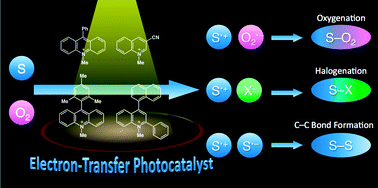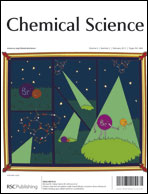Selective photocatalytic reactions with organic photocatalysts
Abstract
Selective photocatalytic oxygenation of various substrates has been achieved using organic photocatalysts via photoinduced electron-transfer reactions of photocatalysts with substrates and dioxygen under visible light irradiation. Photoinduced

- This article is part of the themed collection: Physical Chemistry

 Please wait while we load your content...
Please wait while we load your content...